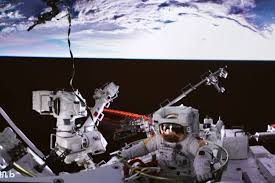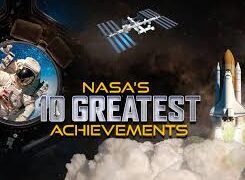NASA’s greatest achievements symbolize human scientific progress and innovation. Two of the most famous of these are the launch of Explorer 1 in 1958, which discovered the Earth’s radiation belts, and the Apollo 11 moon landing in 1969, when Neil Armstrong took the first human step on the moon. In addition, the revelation of the universe by the Hubble Space Telescope and the unveiling of the mysteries of Mars by the Mars Rovers have exposed our consciousness to space. These revelations, just a few examples, show how important NASA is in the revelation and discovery of the universe. Below are some of NASA’s important milestones.

Within minutes of receiving news of Sputnik’s success, the Jet Propulsion Laboratory (JPL) moved to build the second American satellite. Explorer 1 was completed within three months.
Explorer 1 was equipped with cosmic ray detection equipment and recorded 12.5 orbits of the Earth per day with measurements of radiation. Explorer 1 was 80 inches (203 cm) long and 6.25 inches (15.9 cm) wide and weighed 30 pounds (14 kg). The satellite’s detection of low cosmic ray flux led scientist James Van Allen to speculate that Explorer 1 had passed through an unknown radiation belt, which was discovered and named the Van Allen radiation belt. It revolutionized our understanding of Earth’s atmosphere and space.
Explorer 1 made 58,000 orbits around Earth before being destroyed upon re-entry into Earth in 1970.
Before the launch of the Hubble Space Telescope in 1990, astronomers had been observing stars using ground-based telescopes. However, light is distorted by Earth’s atmosphere, so it was difficult to find. By placing telescopes in space, the Hubble Space Telescope enabled astronomers to see distant objects more clearly than they could see from ground-based telescopes. Because Hubble has made more than 1.5 million astronomical observations and observed more than 40,000 objects in space.
Hubble’s images are among the oldest in the history of astronomy. It has shown that the universe is expanding, captured breathtaking views of galaxies, and published more than 15,000 science papers. Hubble’s complementarity with NASA’s telescopes is still uncovering the mysteries of space.
Chandra X-ray Observatory
Since its launch in 1999, the Chandra X-ray Observatory has enabled scientists to study high-energy activity throughout the universe by observing X-rays, which are absorbed by Earth’s atmosphere. Chandra is 200 times more powerful than Hubble and 25 times more sensitive than any X-ray telescope ever built.
Chandra has given us facts about supernova remnants, black holes, quasars, and dark matter. It has also provided information about the formation of stars, the life cycle of stars and the beginning of the universe. It also recently detected low-energy X-rays coming from Pluto, giving us a new concept about the universe outside our solar system.
NASA’s Juno mission spacecraft was launched on August 5, 2011 from Cape Canaveral Air Force Station on a mission to the gas-giant planet Jupiter. The spacecraft reached space on July 4, 2016 after traveling about 500 million miles of space. The purpose of the Juno mission was to map the atmospheres, gravity fields and other features of the planets to obtain useful information about their formation and evolution.
Juno’s special power is the power of the sun. The spacecraft has three huge solar panels 30 feet (9 meters) long. On Jan. 13, 2016, Juno became the first spacecraft to use solar power to travel this far from the sun, an astronomical distance of 493 million miles (793 million kilometers).
Juno’s highly elliptical path takes it only 2,600 miles (4,200 kilometers) to the tops of Jupiter’s clouds. Its most surprising discovery was how deeply its famous jet streams, which create Jupiter’s distinctive clouds, extend — 1,864 miles (3,000 kilometers) deeper into the planet than expected. Juno’s data gives us information about Jupiter, and information gained from exploring Jupiter gives us information about Jupiter’s history in the solar system.
Apollo 13
Apollo 13 was launched to the moon on April 11, 1970. But just 55 hours into the flight, a fire broke out, knocking out vital life support systems. The three-member astronaut crew, James Lovell, John Swigert and Fred Hayes, were left adrift in space, more than 200,000 miles from home, with limited oxygen, power and resources.
At this stage of crisis, the NASA Mission Control Operations Laboratory worked around the clock to find a solution. They used the lunar module, originally designed for landing on the moon, to provide shelter for the crew in distress. In fact, they tried to fit into and stay inside the lunar module, using homemade equipment like carbon dioxide scrubbers, plastic bags and adhesive tape available to the astronauts.

